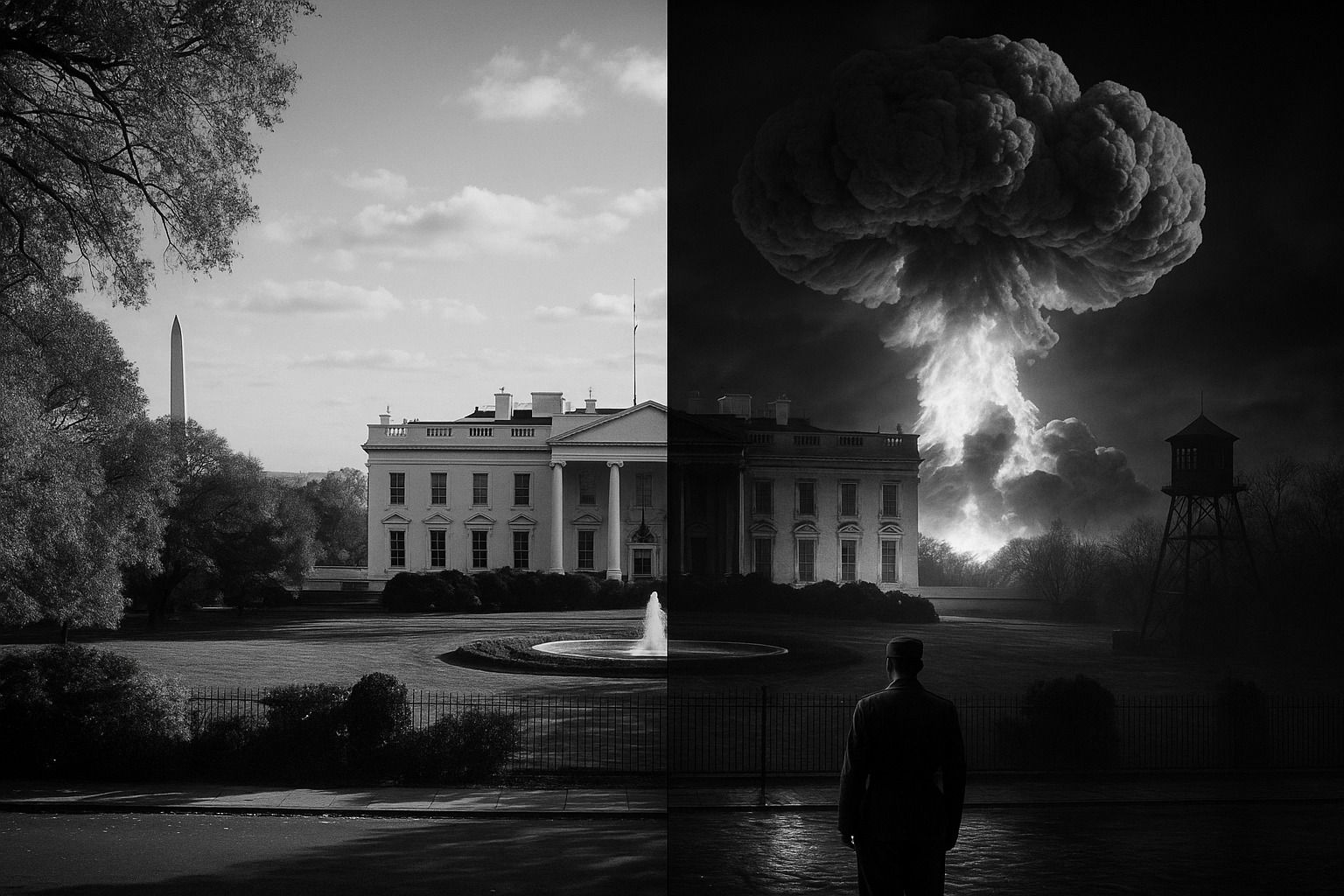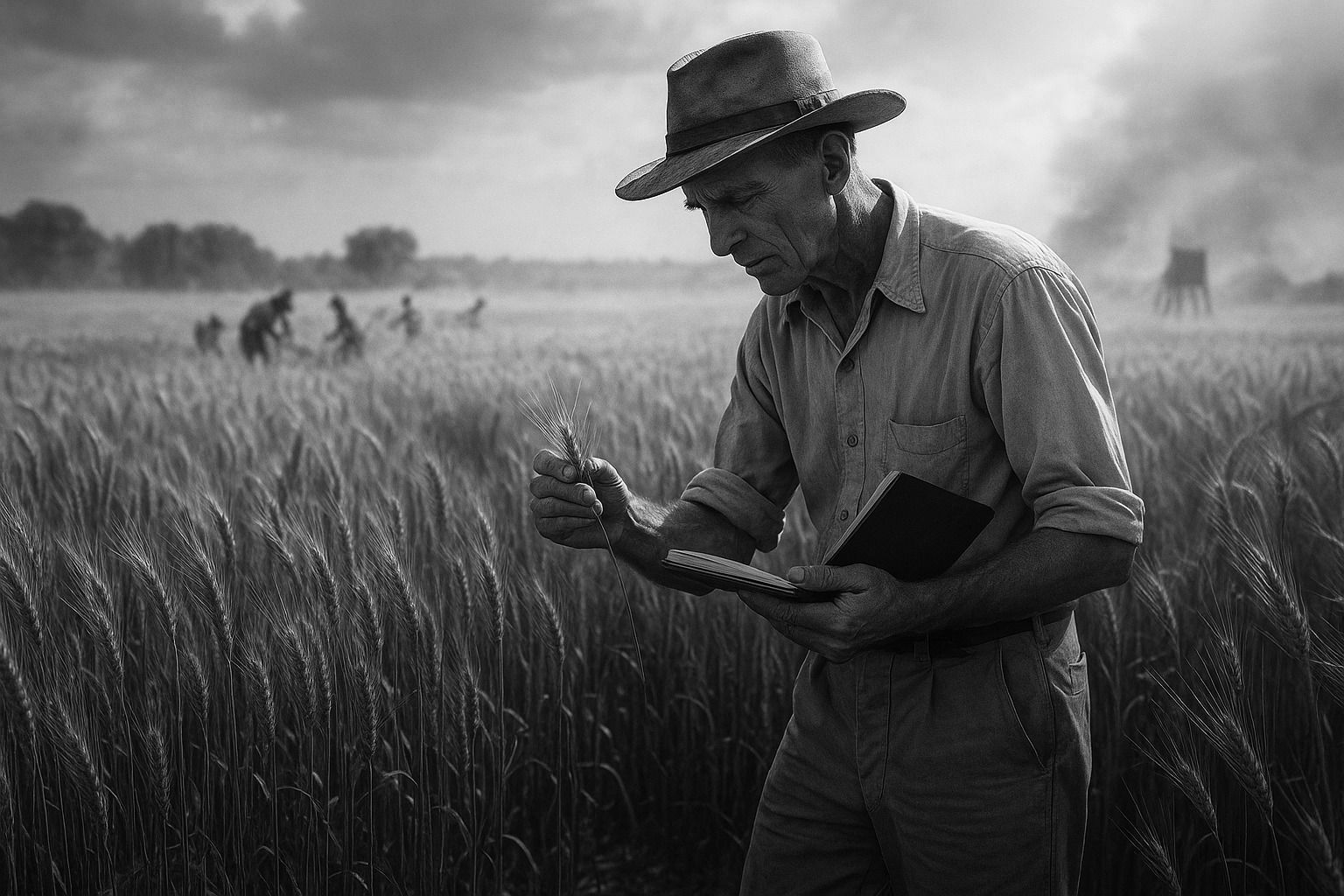
Hello, History Captains!
You know what's wild about history? The most pivotal moments often happen when you least expect them. Take this week of September: In 1846, astronomer Johann Gottfried Galle became the first person to observe Neptune on September 23rd, confirming a planet whose existence had only been mathematically predicted—proving that sometimes you can find entire worlds just by doing the math; in 1806, Lewis and Clark returned to St. Louis on September 23rd after their epic journey across uncharted America, bringing back maps and knowledge that would open the West and reshape the nation's destiny; and on September 24, 1906, President Theodore Roosevelt proclaimed Devils Tower in Wyoming as America's first national monument, launching the conservation movement that would preserve natural wonders for generations to come. History loves throwing curveballs that seem random in the moment but change everything. So if you enjoy this trip through time, make sure to share it with a friend :)
Close Calls: Split-Second Decisions That Nearly Rewrote History
The Commander Who Defied Orders at the Brink During a tense standoff along the Sino-Soviet border in 1969, a Soviet commander received direct authorization from Moscow to launch tactical nuclear weapons against what appeared to be a massive Chinese military buildup threatening Soviet territory. With both nuclear powers on hair-trigger alert and the potential for escalation into the first nuclear war between communist nations, the officer faced an impossible choice: follow orders that could incinerate tens of thousands and risk global catastrophe, or delay and potentially let Soviet positions be overrun. Refusing to act on incomplete intelligence despite repeated commands from senior leadership, the commander stalled for critical hours while demanding better reconnaissance—ultimately discovering the "threat" was a miscommunication about routine troop rotations, single-handedly preventing what could have been the spark that turned the Cold War hot and dragged the entire world into nuclear conflict.
The Dictator Who Wouldn't Die Between 1960 and the early 1990s, Fidel Castro survived an estimated 638 assassination attempts orchestrated by the CIA and Cuban exiles—making him quite possibly the most targeted leader in modern history. From exploding cigars and poisoned diving suits to a femme fatale lover recruited to slip him botulinum pills, American intelligence agencies deployed everything from mafia hitmen to toxic fountain pens in their obsessive quest to eliminate the Cuban revolutionary. The plots grew increasingly bizarre and desperate: contaminating his beloved cigars with a depilatory chemical to make his iconic beard fall out and destroy his image, planting explosive seashells in his favorite diving spots, even proposing to dose him with LSD before a public speech to make him appear insane—yet Castro somehow dodged, detected, or simply outlasted every single attempt, dying peacefully of natural causes at age 90 in 2016, having outlived ten American presidents and turned Cold War assassination efforts into a source of personal pride and international embarrassment for U.S. intelligence.
The Table Leg That Saved Hitler and Doomed Millions On July 20th, 1944, Colonel Claus von Stauffenberg placed a briefcase bomb containing two pounds of plastic explosives just six feet from Adolf Hitler during a conference at the Wolf's Lair—a blast powerful enough to kill everyone in the enclosed concrete bunker where the meeting was originally scheduled. But a last-minute venue change to a wooden building with open windows, combined with another officer unknowingly moving the briefcase to the opposite side of a heavy oak table support, meant the table leg shielded Hitler from the full force of the explosion that killed four others and wounded everyone else in the room. The Führer walked away with minor injuries and a burst eardrum, immediately launching a brutal purge that executed over 5,000 suspected conspirators—ensuring the Nazi regime survived another ten months, prolonging World War II and the Holocaust while costing millions of additional lives, all because a briefcase got nudged three feet to the wrong side of a table.
In This Weeks Episode:
A Nuclear Missile Crisis
The Story Of Norman Borlaug
What If the Cuban Missile Crisis Had Turned Nuclear?

October 1962: A tense autumn afternoon in the White House finds President John F. Kennedy ordering a naval blockade of Cuba, establishing a perimeter around the island rather than authorizing the full-scale invasion that his military advisors urged. In our timeline, those thirteen days of diplomatic maneuvering ended with Soviet Premier Nikita Khrushchev agreeing to withdraw nuclear missiles from Cuban soil. But what if restraint had failed? The world that would have emerged from nuclear exchange would have followed a radically different trajectory—one where civilization itself teetered on the brink of extinction, and human progress was measured not in advancement but in mere survival.
Without Kennedy and Khrushchev's crucial decisions to step back, the Western Hemisphere might have been transformed into a radioactive wasteland within hours. Washington D.C., New York, and dozens of other American cities would have been vaporized, killing millions instantly and leaving survivors to face radiation poisoning. In Moscow, U.S. retaliation would have been swift and overwhelming—Soviet leadership centers, military installations, and population centers would have been obliterated. Western Europe, caught between the superpowers, could have become collateral damage as NATO and Warsaw Pact forces exchanged tactical nuclear strikes across the continent.
Yet this immediate devastation would have been only the beginning. Nuclear winter would have descended on the planet as soot and debris blocked sunlight, plummeting temperatures and destroying agriculture worldwide. Hundreds of millions more would have perished from starvation in the months following the exchange, while radiation fallout poisoned water supplies and rendered vast territories uninhabitable. The Southern Hemisphere might have survived with reduced damage, but global trade collapse and electromagnetic pulse destruction of infrastructure would have sent even untouched nations into chaos.
Recent declassified documents reveal how close individual submarine commanders came to launching nuclear torpedoes, suggesting that human civilization's survival hung on the decisions of a handful of officers under unbearable pressure.
The Man Who Fed The World

In the blistering heat of rural Mexico during the 1940s, a tall, unassuming American scientist trudges through wheat fields that barely yield enough grain to feed their own planters. Norman Borlaug wipes the sweat from his brow and bends to examine another stalk, his notebook filled with sketches and crossbreeding notes. Across continents, hunger is already a familiar killer, haunting India, Pakistan, and much of the developing world. Experts predict mass starvation is inevitable, the “population bomb” too powerful for science to defuse. But Borlaug refuses to accept famine as fate. What he does in these dusty fields will quietly ignite an agricultural revolution and save more lives than any general, president, or king in recorded history.
The agricultural establishment clings to its long-trusted methods, relying on traditional varieties and resigned to recurring crop failures. When harvests collapse under rust disease or fall flat against growing mouths to feed, the answer from many experts is fatalistic: population growth must slow, or starvation will do the job. Borlaug sees what his colleagues overlook—hidden potential locked in the humble wheat plant, a genetic code waiting to be reshaped for resilience and abundance.
Growing Wheat That Shouldn’t Grow
Borlaug begins an obsessive program of crossbreeding, experimenting with thousands of wheat varieties from around the world. He forces wheat to flower at odd times, rushes seedlings between test plots hundreds of miles apart, and races the seasons to stack two harvests into one year. His methods defy convention and exhaust his assistants, but his persistence pays off. He breeds dwarf wheat that resists collapse under its own heavy grain heads, and varieties immune to the rust that once decimated entire harvests.
While agricultural elites dismiss his work as impractical, Borlaug’s fields in Mexico start producing miracles: yields double, then triple. His methods slash growing times, expand planting zones, and turn barren landscapes into breadbaskets. By the mid-1960s, governments in crisis look to Borlaug as their last hope.
The Revolution Takes Root
When famine looms over India and Pakistan, Borlaug’s wheat becomes their lifeline. Convoys of seed are shipped across oceans, and in a single growing season, harvests leap high enough to avert disaster. Grain that once seemed impossible to produce in sufficient volume now pours from the fields, silencing predictions of mass starvation. Borlaug’s “Green Revolution” spreads rapidly, reshaping diets, economies, and the balance of global power. Where experts foresaw collapse, Borlaug delivered survival. By the 1970s, his wheat varieties feed hundreds of millions. His innovations ripple outward into rice, maize, and beyond, forming the backbone of modern agriculture. Entire nations escape the shadow of famine because one scientist refused to accept that hunger was inevitable.
A Snapshot of the 20th Century: When Borlaug Challenged Hunger’s Certainty
When Borlaug began his work, global famine seemed unavoidable; rust disease routinely destroyed wheat harvests across continents; India was importing massive food aid, with experts predicting tens of millions dead; and conventional breeders argued that higher yields would only worsen food instability
The Quiet Victor
Norman Borlaug never became a household name, but by the time of his death in 2009, his wheat strains had saved over a billion lives. Awarded the Nobel Peace Prize in 1970, he remained modest, often reminding audiences that science alone could not end hunger without political will and human compassion. Yet his legacy stands unmatched: a revolution sown in dusty fields that changed the fate of nations. His story is a reminder that sometimes the greatest victories are not won on battlefields but in laboratories and farms—where persistence, imagination, and courage can bend the arc of history toward life instead of death. Borlaug once said: “You can’t build a peaceful world on empty stomachs and human misery.” His wheat proved him right, and the harvests continue to feed us today.
Check out this fascinating documentary on the Green Revolution below
Some Great History Resources
If you’re a teacher or parent and would like to find an engaging way to teach history, check out History Unboxed Here!
